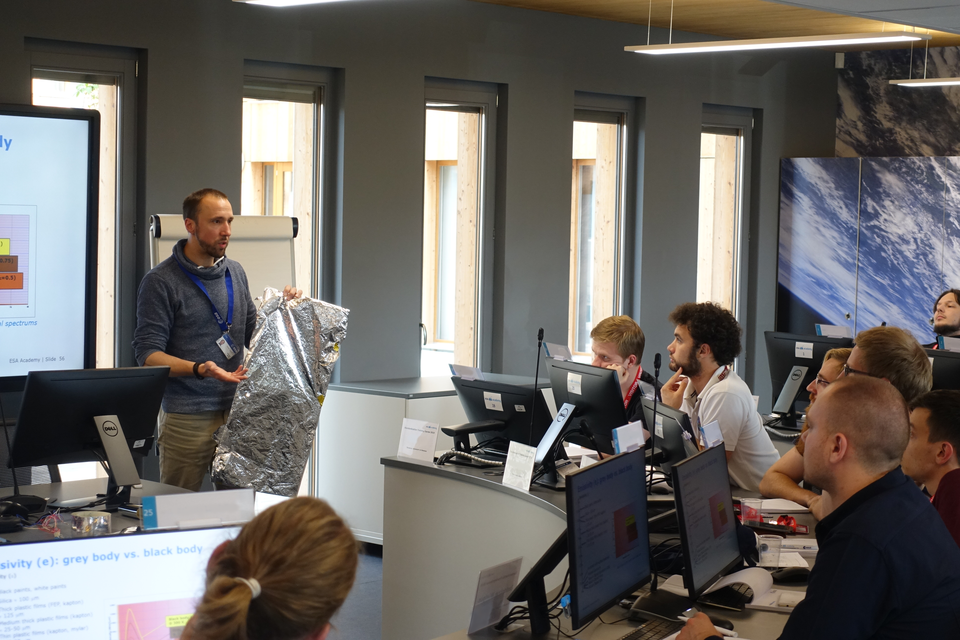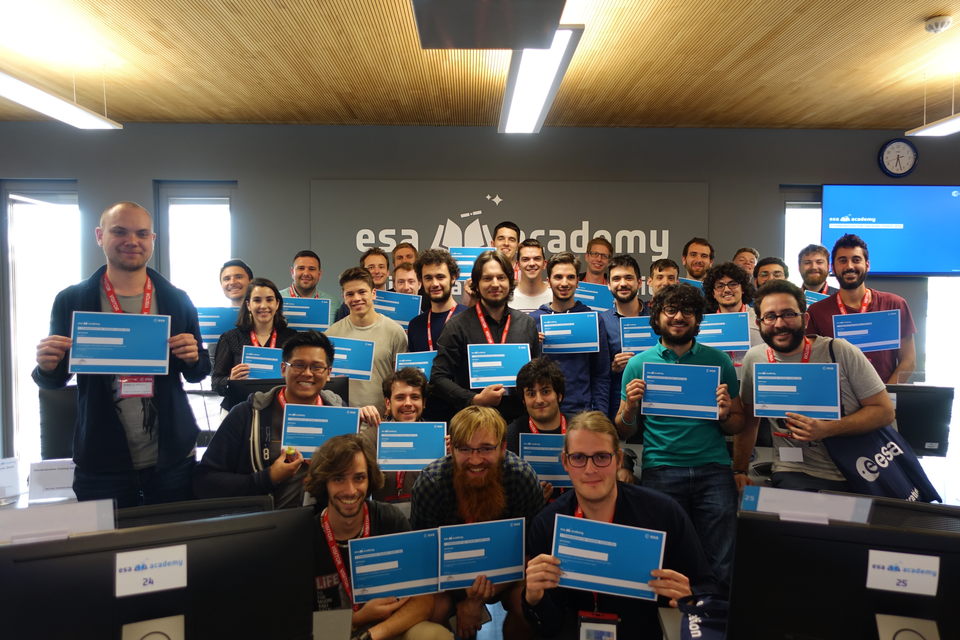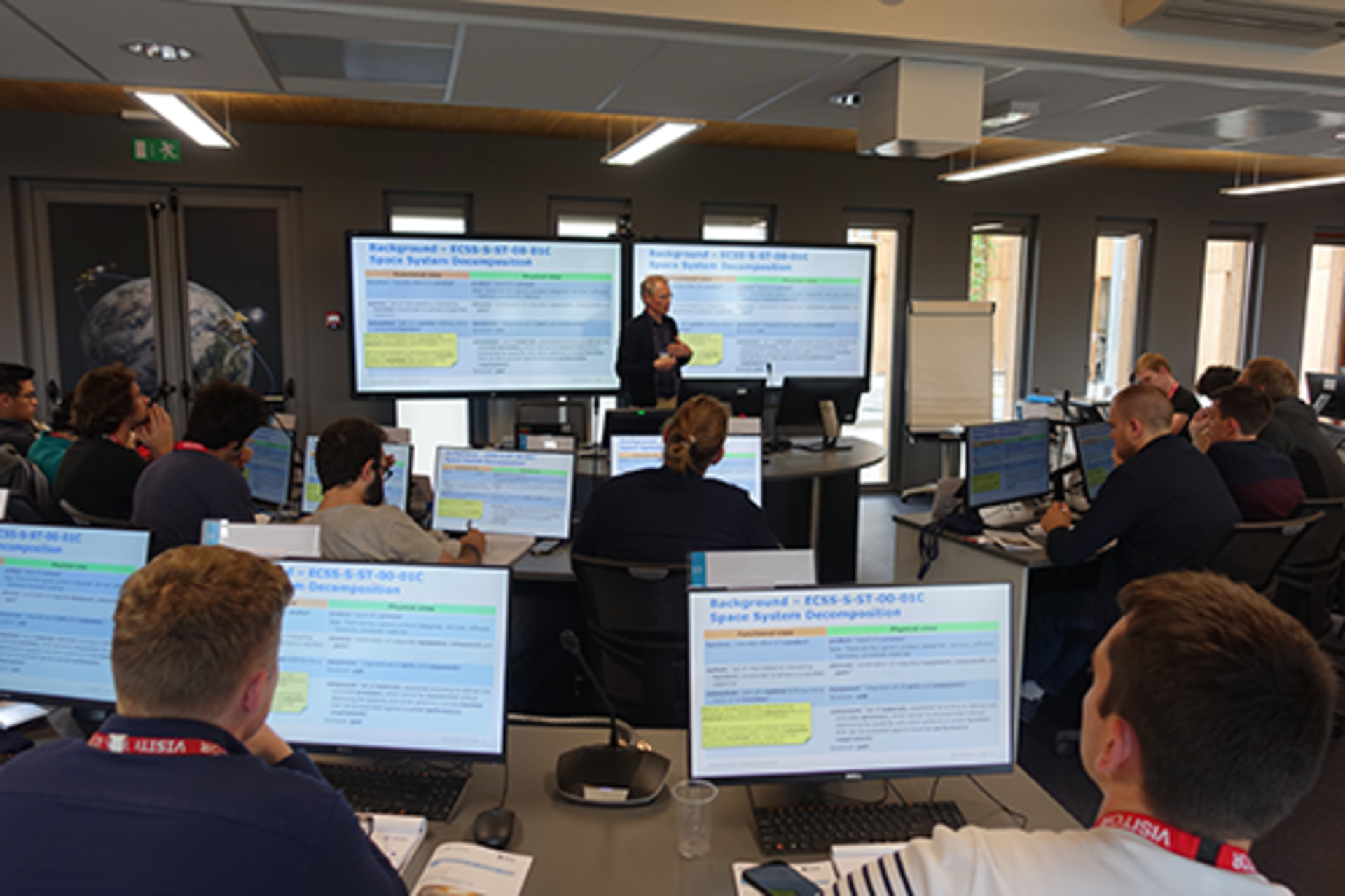Students make the grade in ESA Academy’s Standardization Training Course 2019
30 university students with an engineering and science background, from 13 different ESA Member States and Slovenia, have successfully completed ESA Academy’s Standardization Training Course 2019. Running from 21 – 24 May 2019, and hosted in the specialist Training and Learning Facility, ESEC-Galaxia, Belgium, the training course was a collaboration between ESA’s Education Office and Requirements, Standards and Engineering Knowledge Office.
The goal of the course was to introduce students to the European Cooperation for Space Standardization (ECSS) system. These standards help to organise projects and reduce risk by setting a common framework of tests and criteria. They are, in effect, an invaluable tool to facilitate the work between Space Agencies and industry. However, ECSS is not commonly taught in universities, which is why there is a need for Standardization Training Courses such as this.
"For me the Standardization Training Course 2019 was really interesting and I was able to learn a lot about space engineering within this week,”said a German student from the Hamburg University of Applied Sciences. Furthermore, “I learned about the importance of standardization and how to use these standards to achieve good quality and reliability. The course provided me with a lot of useful information for my work in future space projects."

The students began the busy week by whetting their appetites with a visit to the ESEC-Redu Ground Station and the PROBA Control Room. They also got to meet experts from ESA and the wider space industry, covering various disciplines, who would act as course trainers. In the words of a Spanish student from the Comillas Pontifical University, “I really enjoyed the Standardization Training Course because it was a chance to see how ESA works, who works there and what type of activities they do. Also, we had the opportunity to meet the experts working for ESA and in space industry who gave us advice and first-hand experiences.”
Before long they were learning about the ECSS system and then applicable standards for different technical disciplines. Why are they important, and how can the students apply and tailor them? The trainers made extensive use of examples, exercises and personal experience to demonstrate the importance of the standards and explain when and how they use them.
Day two saw the course participants discover how standards are applied to mechanisms, product assurance, and control engineering. They learned how vital it is to make the standards clear and complete, which can help guarantee the quality and reliability of components. They also saw that when a satellite is designed and developed it must be robust enough to survive all the events on Earth that lead to its launch, as well as its eventual operation in space. As an example, gravity can damage mechanisms during tests on Earth, which can then lead to failure in space. This is why the ECSS cover all parts of a space mission.
The third day was dedicated to how standards are applied to communications, electrical engineering, and thermal engineering. The students were taught how spacecraft communications standards provide guidelines for communication patterns, so that even if small parts of the signal get lost the transmission can still be decoded. Thermal standards help to set up tests to verify if the satellite will stay at the correct temperature during its entire mission.
The fourth and final day was centred on how ECSS standards help to organise ground operations and safeguard space missions from software malfunctions. Even if all subsystems have followed their standards and succeeded in all tests, there can be discrepancies between different disciplines and companies. The students heard from the course trainers about how the ECSS system is used to help safeguard against mishaps, and can assist a team in effectively organising and uniting all aspects of a space mission.

To conclude, the students were evaluated through an online questionnaire in order to obtain a grade for their course transcript. With this document and their certificate of participation, they will be able to claim ECTS credit(s) from their universities.
“The Standardization Training Course is great to get a complete overview of how ESA works, and how much is it structured and able to efficiently manage big projects with complex structures connecting people all over Europe and further,” explained an Italian student from the Università degli Studi di Perugia. To find more information about upcoming ESA Academy training opportunities, please check our website.
Contact: tlp@esa.int


